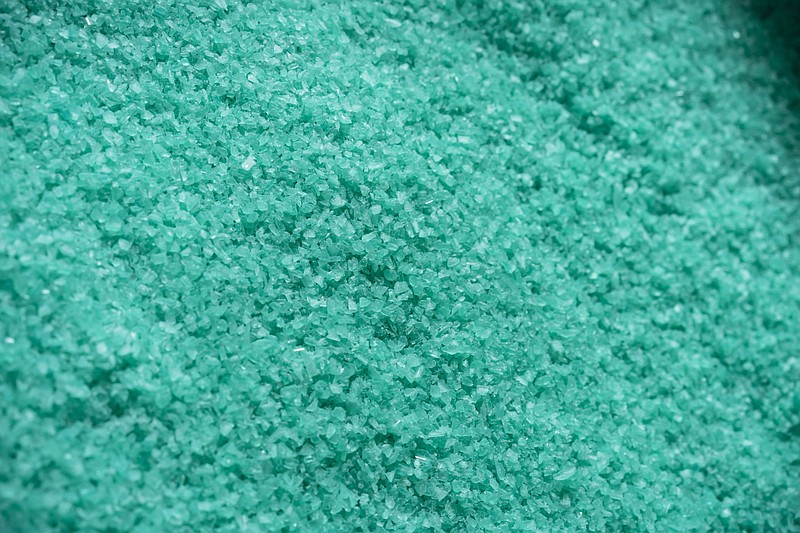For anyone looking for examples of inflation these days, raw materials are a good place to start. Copper, steel -- even lumber -- are either near or at record highs. And so too are plastics, which are often overlooked but are on a tear right now.
Although they're the building blocks of thousands of everyday products, plastics and their chemical ingredients don't trade on major commodity exchanges, and large price moves are largely invisible to the wider world. Yet polyvinyl chloride, or PVC, is in the midst of a dramatic rally, driven by a combination of rebounding global consumer demand and production outages from last month's Texas freeze.
More than 60% of U.S. PVC production is still offline nearly a month after freezing weather hit Texas and Louisiana and decimated the power grid, according to Independent Commodity Information Services, a data provider. U.S. export prices have nearly doubled over the past year. Polyvinyl chloride is a major construction material used for pipes, cable insulation, flooring and roofing, and the U.S. has become the world's biggest exporter of the plastic in recent years.
But PVC is just the tip of the iceberg: Prices of polypropylene, used for packaging consumer goods, are at record levels and more than double the 2019-20 average, according to Independent Commodity Information Services. The cost of high-density polyethylene, used for shampoo bottles and grocery bags, is at the highest since 2008.
"Today we don't have enough volume to even meet the needs of the domestic customers," never mind exports, said Bob Patel, chief executive officer of chemicals giant LyondellBasell Industries, referring to polyethylene. "I think we'll be well into the fourth quarter before we see conditions back to normal," he told the JPMorgan Industrials Conference this week.
Even before the freeze, the industry was struggling to rebound from back-to-back hurricanes last year, meaning the supply shortfalls will have knock-on effects both domestically and around the world, not least in a housebuilding sector already under pressure from skyrocketing lumber prices.
The bottlenecks are already becoming evident in plastics. Honda and Toyota are reducing production of vehicles across North America partly because of the shortage of petrochemicals in their supply chains, the Japanese car giants said this week. Production lines and potentially entire plants are expected to be halted for several days in Kentucky, West Virginia and Mexico, Toyota spokeswoman Shiori Hashimoto said Wednesday.
Petrochemicals account for more than a third of the raw material costs in the average vehicle, according to Independent Commodity Information Services. The car industry is also struggling with a shortage of semiconductors.
Two of LyondellBasell's ethane crackers in Texas are back up and running after the winter storm, but a third in Corpus Christi, Texas, won't start up for another three weeks, Patel said. Exxon Mobil, Royal Dutch Shell, Chevron Phillips Chemical Co., Westlake Chemical, Dow Chemical and others have also experienced severe disruptions at their Gulf Coast operations.
Patel estimates the freeze alone will reduce U.S. production of polyethylene, the most common plastic compound, by about 12% this year.
The Texas freeze is a "tipping point" after "an accumulation of a lot of bad production and supply scenarios over the past year," said Jeremy Pafford, head of the North American section at Independent Commodity Information Services. "That's a cost somebody eventually is going to have to eat, and that usually means the consumer."
The supply crunch is running headlong into strong demand for building materials and packaging over the past year. Consumers spending more time at home has led to a hot housing market in the U.S. as people seek more space, while grocery and online shopping have increased markedly. These trends are likely to continue as the economy reopens, especially as President Joe Biden's $1.9 trillion relief bill works its way through the economy.
It all contributes to reopening higher inflation expectations, particularly in housing, as the U.S. moves toward reopening as the covid-19 vaccination rate increases, said Stephen Stanley, chief economist at Amerherst Pierpont Securities.
"It may be a sign of things to come in the sense that once the economy fully reopens we're likely to see parts of the economy where demand is intense at least for a period of time, leading to some price pressures," he said. "Housing was the first place where it came about but now we're seeing it more broadly."

